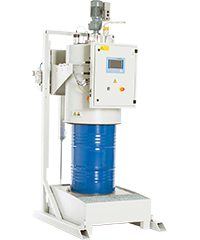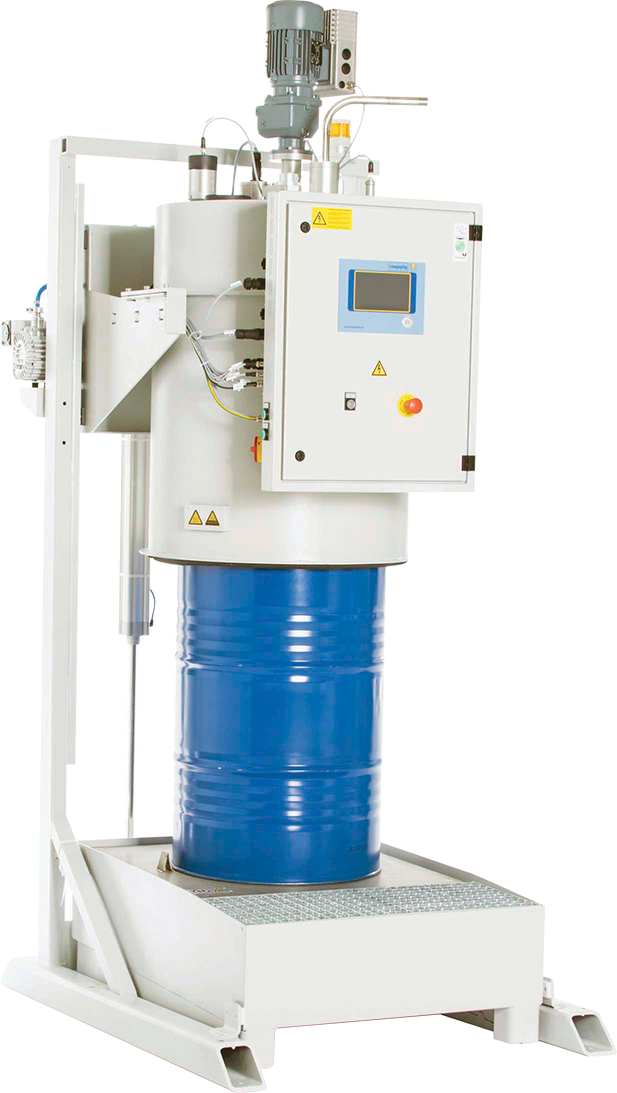Barrel agitator stations, used to process and stir casting resins, have to carry out a number of complex functions on resin barrels as large as 200 liters. For a long time, however, companies were using only modified machines from the painting industry, which lacked a number of safety features.
That’s why Bavarian-based company Scheugenpflug AG designed a new barrel agitator station using ACE industrial gas springs. These springs prevent damage to the machine in the event of sudden pneumatic failure.
Existing Challenges. Barrel agitator stations are responsible for the processing, stirring and controlled heating of flowing media. Used in applications with a high material consumption rate, they ensure a homogeneous potting material at certain temperatures. Until recently, however, only modified barrel agitator stations from the enameling and painting sectors were used to stir and process casting resins in large 200-liter barrels.
Not only that, but these machines failed to meet the specific demands of different casting resins.
To overcome these challenges, Scheugenpflug designed a new barrel agitator station with a special bell, which operators lower over the barrel to carry out a number of functions. The team, however, needed to integrate safety measures in the event of a sudden pressure drop, which would cause the lifting unit to fail and the bell to drop down towards the barrel. This scenario risks damage to the machine, as well as to the barrel itself.
Scheugenpflug contacted ACE to help design a solution.
ACE Industrial Gas Springs Improve Safety. ACE engineers selected industrial gas springs (type GS-40-1000), which would control the lowering of the bell in the event of pneumatic failure. These maintenance-free, adjustable components can handle forces from 2 to 2,923 pounds, provide up to a 39.37-inch stroke and operate via pressurized nitrogen gas. In this case, ACE engineers worked with Scheugenpflug onsite, carrying out a series of tests to determine how much gas needed to be loaded into the springs. Testing was a success, and Scheugenpflug engineers integrated the springs into their new machine.



